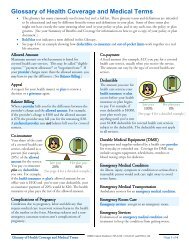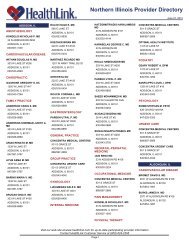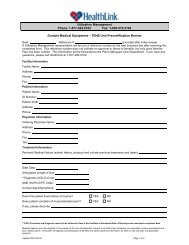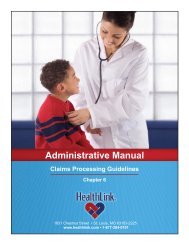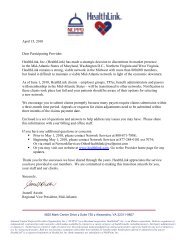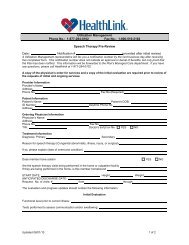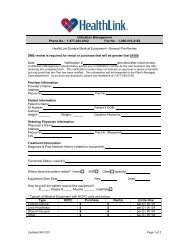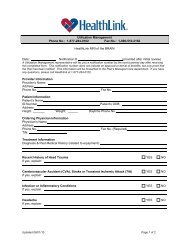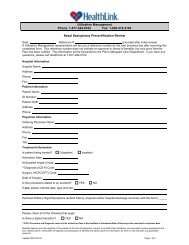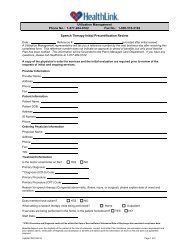State of Illinois - HealthLink
State of Illinois - HealthLink
State of Illinois - HealthLink
Create successful ePaper yourself
Turn your PDF publications into a flip-book with our unique Google optimized e-Paper software.
• Donor sperm and eggs (medical costs, lab)<br />
• Procedures utilized to retrieve oocytes or sperm, and subsequent procedures used to<br />
transfer the oocytes or sperm to the covered recipient<br />
• Associated donor medical expenses, including but not limited to physical examination,<br />
laboratory screening, psychological screening, and prescription drugs (through Express<br />
Scripts) if established as prerequisites to donation by the covered member (no benefit<br />
available for anonymous donor relative to prescription drugs)<br />
What are the limits <strong>of</strong> the coverage for infertility benefits<br />
Coverage for treatments that include oocyte retrievals is required only if the covered<br />
individual has been unable to attain or sustain a successful pregnancy through reasonable,<br />
less costly medically appropriate infertility treatments for which coverage is available<br />
under the plan.<br />
Coverage for such treatments is limited to four completed oocyte retrievals per lifetime <strong>of</strong><br />
the individual, except that two completed oocyte retrievals are covered after a live birth is<br />
achieved as a result <strong>of</strong> an artificial reproductive transfer <strong>of</strong> oocytes. For example, if a live<br />
birth takes place as a result <strong>of</strong> the first completed oocyte retrieval, then two more<br />
completed oocyte retrievals for a maximum <strong>of</strong> three are covered under the law. If a live<br />
birth takes place as a result <strong>of</strong> the fourth completed oocyte retrieval, then two more<br />
completed oocyte retrievals for a maximum <strong>of</strong> six are covered. The maximum number <strong>of</strong><br />
completed oocyte retrievals that can be covered under the law is six.<br />
One completed oocyte retrieval could result in many procedures used to transfer the<br />
oocytes or sperm (see below). After that, the benefit is maxed out and no further benefits<br />
are available under the law.<br />
IntraUterine Insemination (IUI or AI) – means washed sperm is placed into the uterus<br />
through a small catheter (no limit).<br />
Intracytoplasmic Sperm Injection (ICSI) – means direct injection <strong>of</strong> a single sperm into an<br />
egg retrieved from the ovary. After injection, the egg is allowed to fertilize in an incubator<br />
before being transferred back to the uterus (no limit once egg is retrieved).<br />
Gamete Intra Fallopian Transfer (GIFT) – means direct placement <strong>of</strong> eggs and sperm into<br />
the fallopian tube. Fertilization takes place naturally inside the tube not outside the body<br />
(as in IVF). This procedure requires that a laparoscopy be performed (no limit once is egg<br />
is retrieved).<br />
Zygote Intra Fallopian Transfer (ZIFT) – means a combination <strong>of</strong> IVF and GIFT; the egg<br />
and sperm are fertilized externally and then placed directly into the fallopian tube. This<br />
procedure requires that a laparoscopy be performed (no limit once egg is retrieved and<br />
includes frozen embryo transfers as well).<br />
Low Tubal Ovum Transfer (TET) – means eggs are transferred past a blocked or damaged<br />
section <strong>of</strong> the fallopian tube to an area closer to the uterus (no limit).<br />
160000 Page 10



